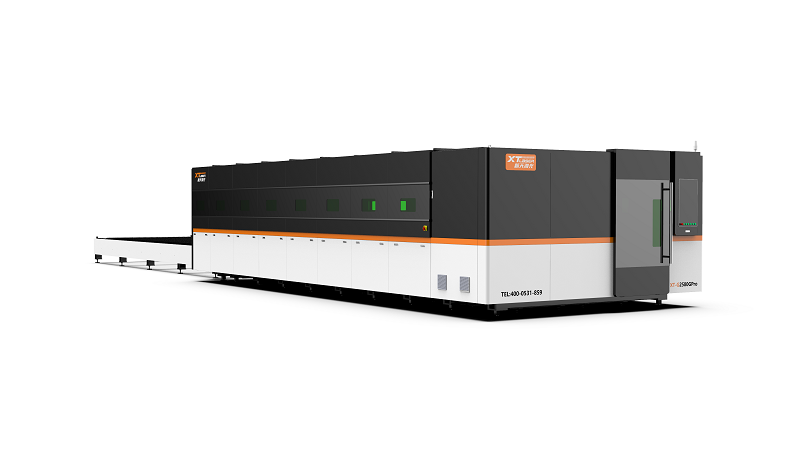Laser Cutting Machines: Revolutionizing Precision Manufacturing
2025-03-21
In the world of modern manufacturing, the need for precision and efficiency has never been greater. One technology that has transformed industries across the globe is the laser cutting machine. This advanced technology has revolutionized the way materials are processed, offering remarkable speed, accuracy, and versatility. In this blog, we’ll explore what laser cutting machines are, how they work, and the many advantages they offer to manufacturers in a variety of industries.
What is a Laser Cutting Machine?
A laser cutting machine is a device that uses a high-powered laser beam to cut through materials with extreme precision. The laser beam is focused onto the material’s surface, which melts, burns, or vaporizes the material, creating a clean and accurate cut. Laser cutting machines can work with a wide range of materials, including metals, plastics, wood, ceramics, and even fabrics. The ability to precisely control the laser’s intensity, focus, and movement makes these machines a go-to solution for complex and detailed cuts.
How Do Laser Cutting Machines Work?
The process of laser cutting involves several key components and steps:
1. Laser Generation: A laser cutting machine starts by generating a high-intensity laser beam using a laser source. This source can be a CO2 laser, fiber laser, or another type, depending on the material being cut and the specific machine’s capabilities.
2. Beam Focus and Control: The laser beam is directed and focused by mirrors or lenses onto the material’s surface. The laser cutting machine's computer-controlled system allows for precise control over the movement and positioning of the beam, ensuring the cuts are made exactly where they are needed.
3. Cutting Process: Once the laser beam strikes the material, it melts, burns, or vaporizes the material at the cutting point. The material is then ejected or blown away by a stream of gas, typically nitrogen or oxygen, to prevent any residue buildup and ensure a clean cut.
4. Precision and Accuracy: The laser cutting machine’s CNC (computer numerical control) system provides unmatched accuracy, allowing manufacturers to produce complex shapes, intricate designs, and tight tolerances with ease.
Types of Laser Cutting Machines
There are several different types of laser cutting machines available, each with its own unique benefits and applications:
1. CO2 Laser Cutting Machines
CO2 lasers are one of the most common types of laser cutting machines. They use a carbon dioxide laser to cut through non-metal materials like wood, acrylic, plastic, and leather. CO2 laser cutting machines are known for their versatility and efficiency in handling various material types.
2. Fiber Laser Cutting Machines
Fiber lasers use a solid-state laser source made of optical fibers to generate the cutting beam. These machines are highly efficient and are best suited for cutting metals, including stainless steel, aluminum, and titanium. Fiber laser cutting machines offer excellent precision and speed, making them a popular choice for industries that require high-volume production and fine detailing.
3. Nd:YAG Laser Cutting Machines
Nd:YAG lasers use a crystal of neodymium-doped yttrium aluminum garnet (Nd:YAG) to generate the laser beam. These lasers are often used for high-precision cutting of metals and are ideal for applications that require deep penetration, such as in aerospace and automotive industries.
Advantages of Laser Cutting Machines
Laser cutting machines offer numerous advantages over traditional cutting methods, including:
1. Precision and Accuracy
Laser cutting provides exceptional precision, allowing manufacturers to create parts with tight tolerances and intricate designs. The ability to make complex cuts and shapes with minimal error makes laser cutting ideal for industries like aerospace, automotive, and electronics, where accuracy is critical.
2. Speed and Efficiency
Laser cutting machines are known for their speed. Since the laser beam can move quickly and accurately across the material, laser cutting allows for rapid production times. This is particularly beneficial in industries where high volumes of parts need to be produced quickly, such as in sheet metal fabrication and mass production.
3. Minimal Material Waste
One of the standout benefits of laser cutting is its minimal waste. The precision of the laser beam ensures that cuts are made exactly where they are needed, reducing scrap material. This results in cost savings for manufacturers, as they can maximize the use of their raw materials.
4. Ability to Cut Complex Shapes
Laser cutting machines are highly versatile when it comes to cutting complex and intricate shapes. The machine’s computer-controlled system can create designs with extreme detail and complexity, making it possible to produce parts that would be difficult or impossible to achieve with traditional methods.
5. No Physical Contact with the Material
Since the laser beam is non-contact, there is no physical wear and tear on the cutting tool. This eliminates the need for frequent tool replacements, reducing downtime and maintenance costs. Additionally, the non-contact nature of laser cutting minimizes the risk of material distortion or damage during the cutting process.
6. Clean and Smooth Edges
Laser cutting produces clean, smooth edges with minimal need for additional finishing work. This is particularly important for industries that require high-quality cuts for aesthetic or functional purposes, such as in the production of signage, jewelry, and custom parts.
7. Versatility in Material Handling
Laser cutting machines are capable of cutting a wide range of materials, from metals like steel and aluminum to non-metals like wood, plastic, and rubber. This versatility makes them valuable tools for industries with diverse material needs, such as the automotive, electronics, and signage sectors.
Applications of Laser Cutting Machines
Laser cutting machines have a broad range of applications across various industries. Some of the key uses include:
- Metal Fabrication: Laser cutting is widely used in metalworking for cutting, engraving, and etching metals. This includes applications in industries like aerospace, automotive, and manufacturing, where precision and speed are essential.
- Signage and Graphics: Laser cutting is commonly used in the creation of custom signs and graphics. The precision of the process allows for intricate designs and detailed text to be cut out of various materials.
- Electronics Manufacturing: Laser cutting plays a critical role in electronics production, particularly in the cutting of PCBs (Printed Circuit Boards) and other components.
- Textile Industry: Laser cutting machines are used for cutting fabrics, textiles, and leather in fashion design and garment manufacturing.
- Architecture and Design: Laser cutting is used to create intricate architectural models, furniture, and decorative elements.
Conclusion
Laser cutting machines have undeniably transformed the manufacturing landscape, offering unparalleled precision, speed, and versatility. With their ability to cut a wide range of materials, produce intricate designs, and minimize material waste, these machines are invaluable tools for industries ranging from automotive and aerospace to electronics and fashion. As technology continues to advance, laser cutting machines are likely to become even more efficient, further solidifying their place as a cornerstone of modern manufacturing.
If you’re looking to improve your manufacturing processes, investing in a laser cutting machine could be the key to unlocking new levels of precision, speed, and efficiency in your operations.



